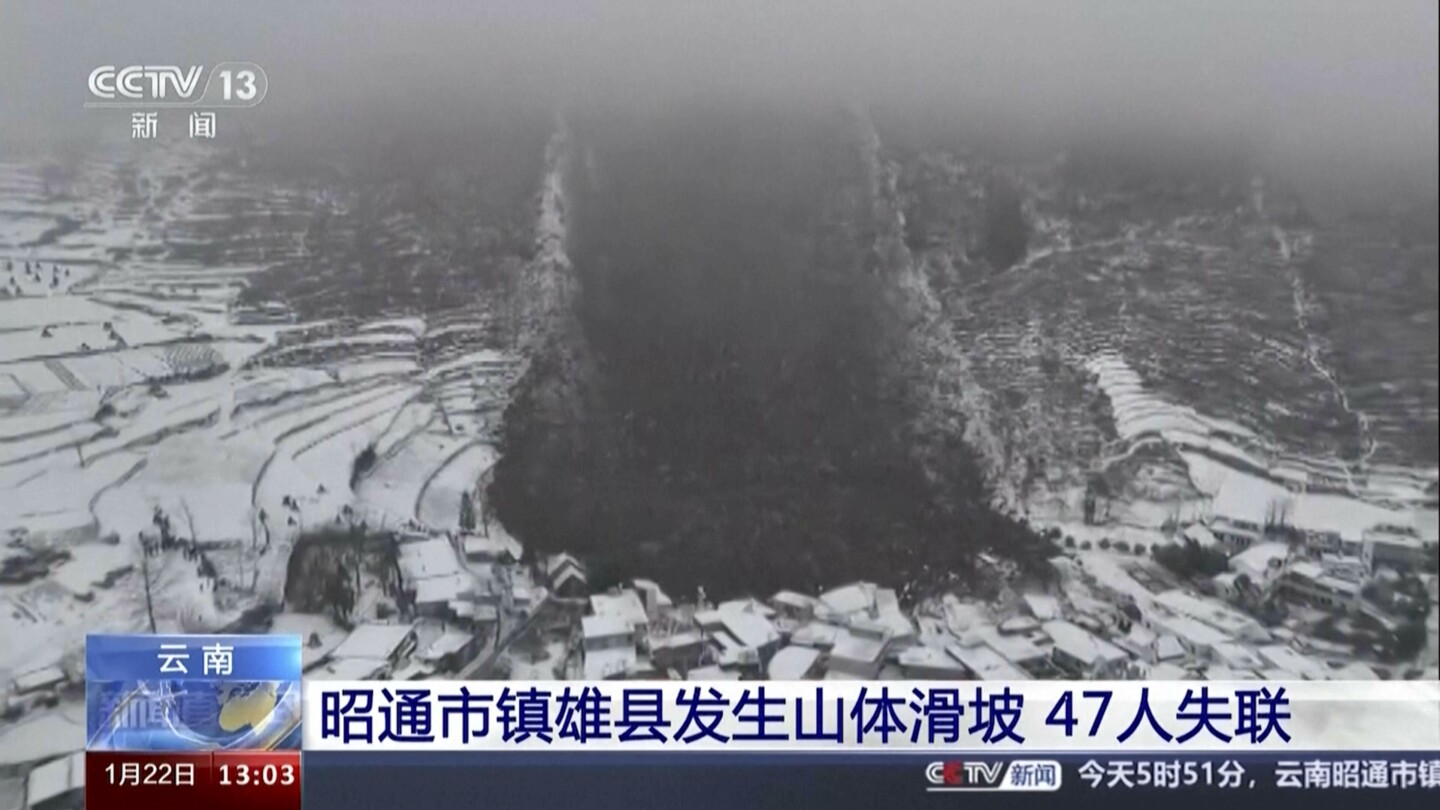BEIJING (AP) — The death toll from a landslide in a remote, mountainous part of southwestern China rose to 34 on Wednesday, while 10 people remained missing, Chinese state media reported.
The disaster struck early Monday in the village of Liangshui in the northeastern part of Yunnan province.
Search and rescue operations continued amid freezing temperatures and falling snow.
More than 1,000 rescuers were working at the site with the help of excavators, drones and rescue dogs, the Ministry of Emergency Management said Tuesday. Two survivors were found Monday and were recovering at a local hospital.
State news agency Xinhua, citing a preliminary investigation by local experts, said the landslide was triggered by the collapse of a steep clifftop area, with the collapsed mass measuring around 100 meters (330 feet) wide, 60 meters (200 feet) in height and an average of 6 meters (20 feet) in thickness. It did not elaborate on what caused the initial collapse.
Aerial photos posted by Xinhua showed the side of a heavily terraced mountain had spilled over several village homes. More than 900 villagers were relocated.
Zhenxiong county lies about 2,250 kilometers (1,400 miles) southwest of Beijing, with altitudes ranging as high as 2,400 meters (7,900 feet).
Rescuers struggled with snow, icy roads and freezing temperatures that were forecast to persist for the next days.
Heavy snow has been falling in many parts of China, causing transportation chaos and endangering lives.
Last week, rescuers evacuated tourists from a remote skiing area in northwestern China where dozens of avalanches triggered by heavy snow had trapped more than 1,000 people for a week. The avalanches blocked roads, stranding both tourists and residents in a village in Altay prefecture in the Xinjiang region, close to China’s border with Mongolia, Russia and Kazakhstan.
On Tuesday, a magnitude 7.1 earthquake in a remote part of Xinjiang killed at least three people and caused extensive damage in freezing weather. Officials suggested the area’s sparse population contributed to the “very strong” quake’s low death toll.
In all, natural disasters in China left 691 people dead and missing last year, causing direct economic losses of about 345 billion yuan ($48 billion), according to the National Commission for Disaster Reduction and the Ministry of Emergency Management. Meanwhile, the Ministry of Natural Resources implemented emergency response measures for geological disasters and sent a team of experts to the site.

